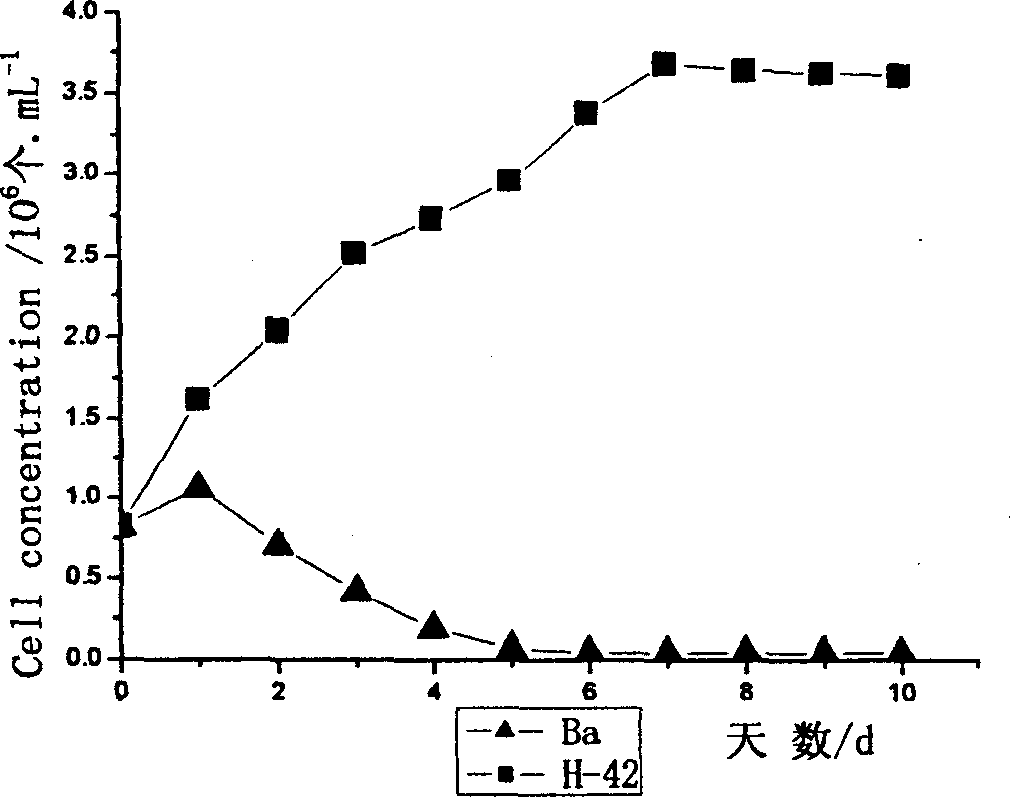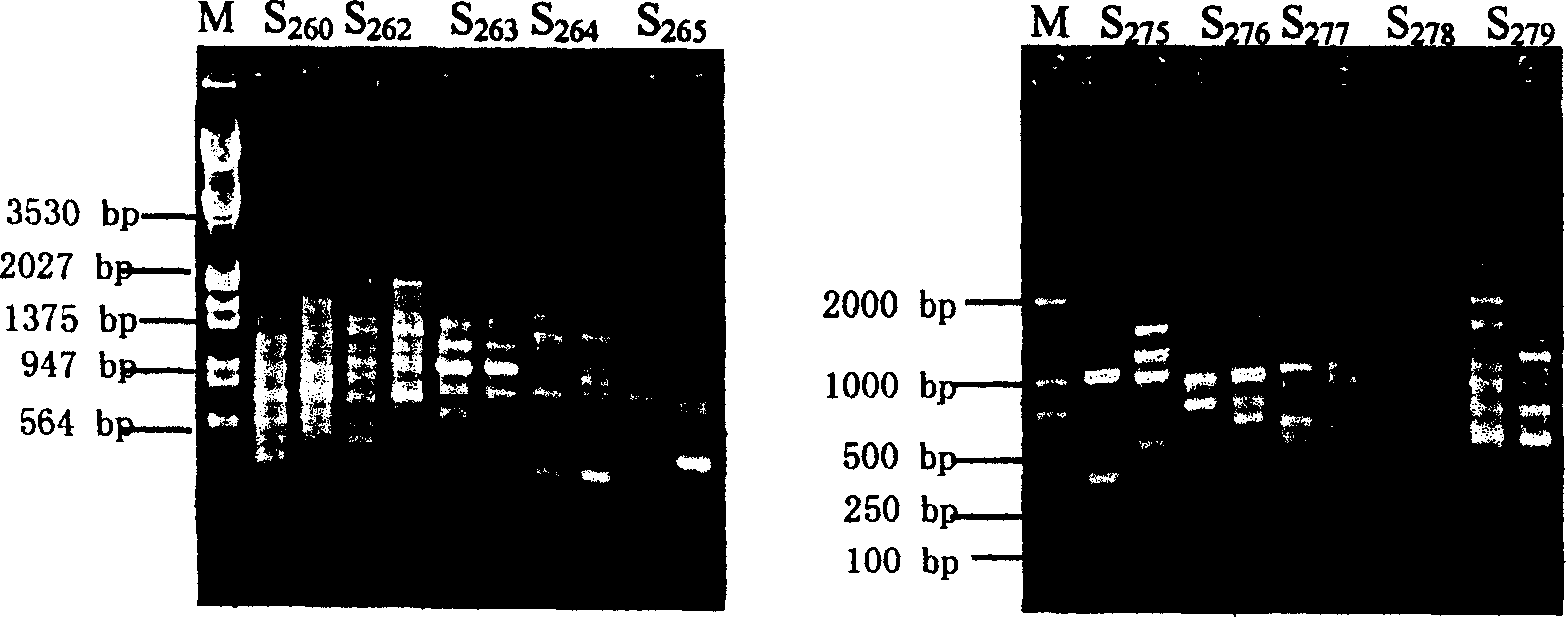Mutagenic breeding method of high temperature resistant pasteur Du algae
A Dunaliella pasteuria high-temperature-resistant technology, applied in the field of single-cell green algae, can solve the problem that Dunaliella can not tolerate high temperature, etc., and achieve the effect of prolonging the open-air cultivation time and improving production efficiency
- Summary
- Abstract
- Description
- Claims
- Application Information
AI Technical Summary
Problems solved by technology
Method used
Image
Examples
Embodiment 1
[0061] The specific steps for mutagenizing and cultivating high temperature-resistant Dunaliella pasteurii with ultraviolet rays are as follows:
[0062] 1. Preparation of artificial seawater medium for cultivating Dunaliella pasteurii;
[0063] 2. Divide the above-mentioned artificial seawater medium into 100mL Erlenmeyer flasks, each containing 20mL, plug it tightly with a cotton plug, and wrap it with kraft paper;
[0064] 3. Place the packaged above-mentioned culture medium in an autoclave, sterilize at 121°C and a pressure of 0.1mPa for 15 minutes;
[0065] 4. Take out the sterilized culture medium, after cooling to room temperature, inoculate 1mL of Dunaliella pasteurii algae liquid into the sterile medium, shake it gently, and plug it with a cotton plug;
[0066] 5. Place the culture medium in a light incubator, light intensity 1000lux, culture temperature 20°C, daily light time 12h, rotate and shake, 90rpm;
[0067] 6. Take out 0.3mL of algae liquid every day and mix...
Embodiment 2
[0082] Similar to Example 1, the difference is that the artificial seawater culture medium is divided into 250mL Erlenmeyer flasks, each containing 50mL, sealed with 8 layers of gauze, and wrapped with kraft paper. Place the packaged medium above in an autoclave, and sterilize at 121° C. and a pressure of 0.1 mPa for 20 minutes. Take out the sterilized culture medium, cool it down to room temperature, inoculate 5 mL of Dunaliella pasteurella liquid into the sterile culture medium, shake it gently, and seal it with gauze. The culture solution was placed in a light incubator with a light intensity of 4000 lux, a culture temperature of 30°C, and 24 hours of light per day, for static culture, and gently shaken 1 to 3 times a day for 10 to 20 seconds each time.
[0083] The next day, take out 0.3mL of algae liquid and mix with an equal amount of bromophenol blue solution to inactivate Dunaliella pasteurii. Immediately take a sample and calculate the density of Dunaliella pasteurii...
Embodiment 3
[0093] Similar to Example 1, the difference is that the artificial seawater culture medium is divided into 200mL Erlenmeyer flasks, each containing 40mL, sealed with a cotton plug, and wrapped with kraft paper. Place the packaged medium above in an autoclave, and sterilize at 121° C. and a pressure of 0.1 mPa for 15 minutes. Take out the sterilized culture medium, cool it down to room temperature, inoculate 3 mL of Dunaliella pasteurella liquid into the sterile medium, shake it gently, and stuff it with a cotton plug. The culture solution was placed in a light incubator with a light intensity of 3000 lux, a culture temperature of 25°C, and 24 hours of light per day, for static culture, and gently shaken 1 to 3 times a day for 10 to 20 seconds each time.
[0094] Take out 0.2mL of algae liquid every day and mix it with an equal amount of iodine solution to inactivate Dunaliella pasteurii. Immediately take a sample and read it on a hemocytometer to calculate the density of Duna...
PUM
 Login to View More
Login to View More Abstract
Description
Claims
Application Information
 Login to View More
Login to View More - R&D Engineer
- R&D Manager
- IP Professional
- Industry Leading Data Capabilities
- Powerful AI technology
- Patent DNA Extraction
Browse by: Latest US Patents, China's latest patents, Technical Efficacy Thesaurus, Application Domain, Technology Topic, Popular Technical Reports.
© 2024 PatSnap. All rights reserved.Legal|Privacy policy|Modern Slavery Act Transparency Statement|Sitemap|About US| Contact US: help@patsnap.com










